Earthquakes and structures
EARTHQUAKES
Origin of earthquakes
Under various circumstances, these tectonic plates are still moving, very slowly, towards each other or away from each other. These movements generate a lot of friction, which generate tensions and compressions in the earth’s crust. This friction is like energy, which gets stored in the deepest strata of the ground. Earthquakes happen when the ground cannot accumulate anymore of this energy, which is then released with violence on the surface of the globe.
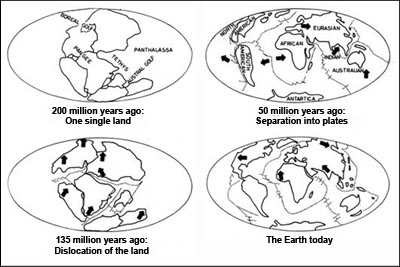
The original focus of the earthquake is called the hypocentre. It lies deep into the ground. The geographical point on the surface, which is vertical to the focus, is called the epicentre.
Two scales measure earthquakes: the Richter scale, which measures the magnitude and the Mercalli scale, which measures the intensity of an earthquake.
Seism can be of various natures. The most frequent ones are due to the movement of tectonic plates. Earthquakes can have other natures: volcanic or caving in. Tectonic earthquakes are the most devastating ones.
Seismic waves

The first prototype of an earthquake resistant house was built at Istanbul, Turkey in 1996. It was sponsored by UNCHS/HABITAT.
It was pre-cast in 10 days using semi-skilled labour and it was assembled in 8 days during the “1996 City Summit / HABITAT” at Istanbul – Turkey. It was done at the request of CRATerre.
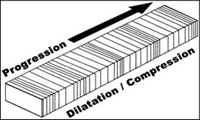
Their manifestation creates a change in volume and generates compression and dilatation of the ground.
Their velocity is high: 5 to 8 Km/s
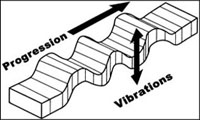
They also called shear or transversal waves and they are very destructive. The soil oscillates vertically and perpendicularly to their direction.
Their velocity is lower than P waves: 3 to 5 Km/s.
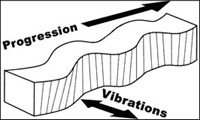
They are also transversal ones, like S waves. The soil oscillates horizontally and perpendicularly to their direction.
Their velocity is like S waves.
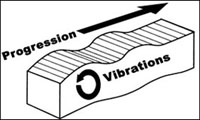
The soil oscillates in an elliptical movement, counter clockwise to their direction.
Their velocity is a little lower than S waves.
See the case study page Gujarat rehabilitation after the earthquake
Two scales measure earthquakes: the Richter scale and the Mercalli scale:
• The Richter scale gives a quantitative measure of earthquakes. It defines the magnitude of an earthquake, which is the amount of energy released on the surface. The Richter scale is logarithmic: each whole number increase in magnitude represents a ten-fold increase in the measured amplitude of the seism. This scale has no upper limit, but the largest known shocks have had magnitudes up to 8.8 to 8.9.
• The Mercalli scale assesses the effects of an earthquake. It defines the intensity of the earthquake, which is expressed from 1 to 12. The intensity and thus the effect of the seism are related to the distance from the epicentre. It is based on more subjective effects, like movement of furniture, extents of damages to structures, modification of the landscape, etc.
Earthquakes don’t directly kill people. Ground shaking destroys infrastructure and buildings and hence, it is of a material nature. Death of people is occurred by the collapse of buildings in which they live. Therefore, the real cause of life’s loss is badly built or un-appropriate constructions, which instantly collapse without warning.
Ground motion during an earthquake
The hypocentre of an earthquake generates various types of waves. When they reach the surface, the ground shakes everywhere horizontally and vertically especially near the epicentre. The motions are always reversible and this implies that buildings vibrate in all directions and in a very irregular manner due to the inertia of their masses.
It is not possible to predict earthquakes. Parameters involved and the absence of sufficient data makes it impossible to foresee, where, when and with which magnitude would strike an earthquake.
If it is not possible to predict earthquakes, it is possible to prevent major damages and most of life’s losses. India is divided in five zones and there are several Indian standards, which defines building codes for earthquake resistance. The design of every engineered or non-engineered building must follow it.
Further, the construction must be well built, that means by people who should follow the state of the art in construction, or at least the basics of masonry, and who are conscious of their responsibility in the execution of a building, which must resist an earthquake. The prevention of earthquakes is based on the possibility of buildings to resist earthquakes without sudden collapse.
Every country is divided in various seism zones, according the probability and intensity of earthquake. India has been mapped in 4 zones (2, 3, 4 and 5), according to the risk of earthquakes: zone 5 has the greatest risk for strong earthquakes (See IS 1893: 1984). These zones are mainly based on the Mercalli scale. They are related to:
| • Intensity and magnitude of past earthquakes | • Probability of earthquakes | • Nature of the ground and soil-foundation system | • Risk occurred because of the density of population and/or buildings |
EARTHQUAKE EFFECTS ON A STRUCTURE
Structural elements, such as walls, columns and beams, are only bearing the weight of the building and the live load under normal conditions: mostly compression forces for the walls and columns, and vertical bending for the beams. Under dynamic load, they also have to withstand horizontal bending and shear forces, and extra vertical compression forces.
It is a mistake to believe that earthen buildings are more sensitive to earthquakes than other ones which are built with stones, bricks or concrete blocks. The matter is always how well buildings are designed and built. The examples of buildings standing after the earthquake of Gujarat show that well built building made either of stones or adobe blocks behaved very well, when all the rest around fell down.
Failure mechanism of walls
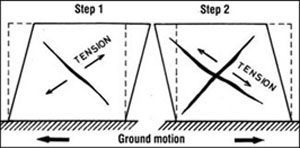
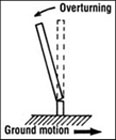
Typical damages in a masonry building
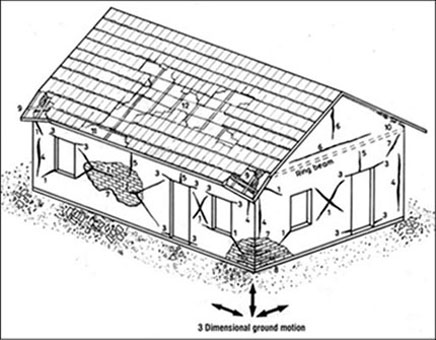
| 1. Diagonal shear crack of piers 2. Horizontal shear crack of long pier 3. Bending cracks at feet and lintels 4. Bending crack of wall (bad corner bond) 5. Bending crack of spandrel 6. Bending crack of gable | 7. Plaster peeling off 8. Crushing of weak masonry under vertical ground motion 9. Damage of corner eaves under vertical ground motion 10. Badly anchored roof, pulled out by vertical ground motion 11. Falling of tiles from the roof eave 12. Damage of tiles roof with shear (roof not braced) |
Badly built buildings
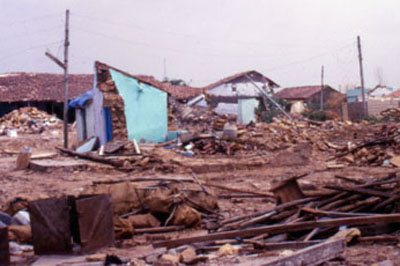
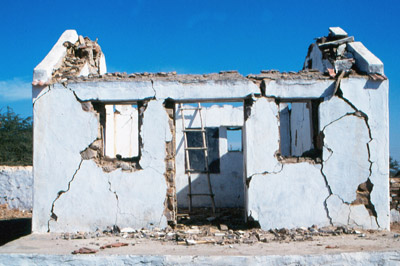
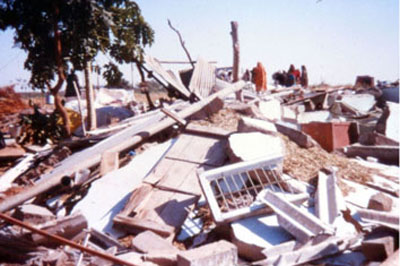
Adobe buildings, still in shape
These adobe buildings were well built and they withstood the earthquake of Gujarat
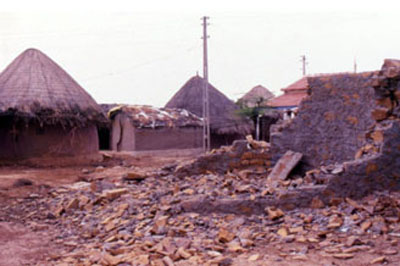
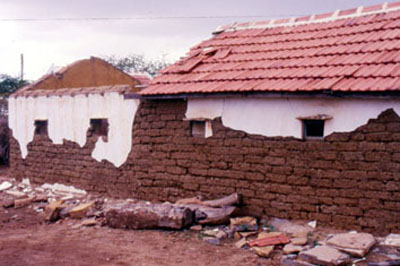

Pathology on stone buildings
These building were built without bond patterns and without “through stones”
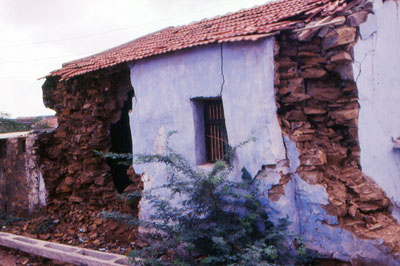
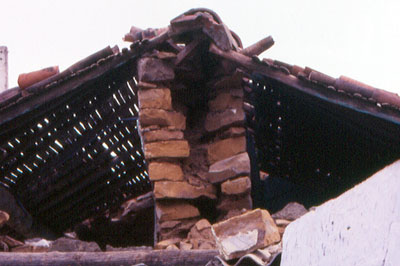

Typical shear cracks
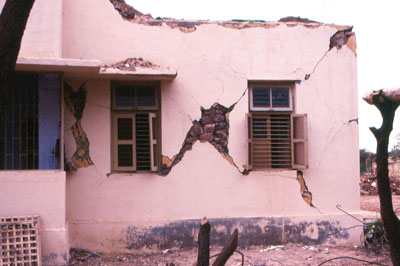
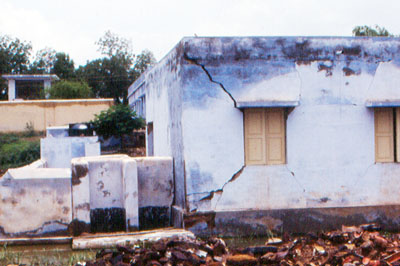
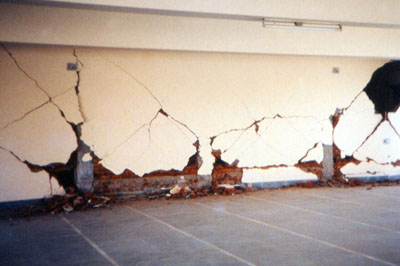
Other typical pathologies
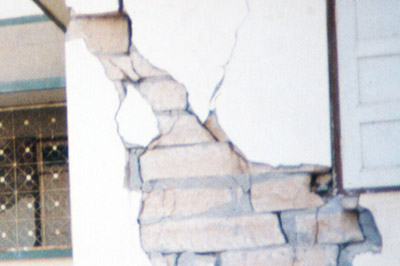
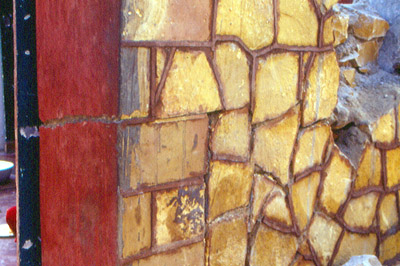
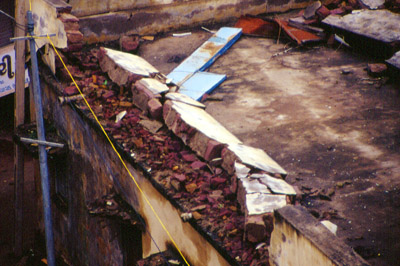
Prag Mahal – Bhuj, Built at the 19th Century
It was well built with stones and lime mortar and it had only minor damages
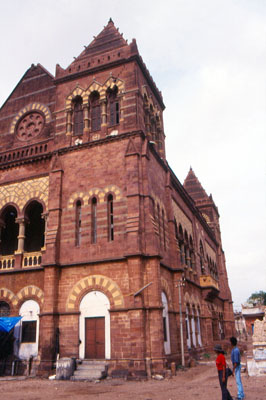
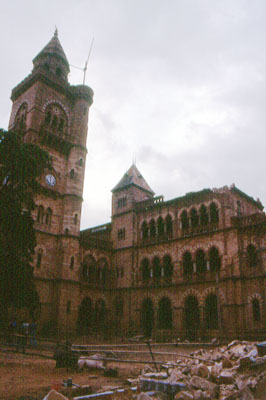
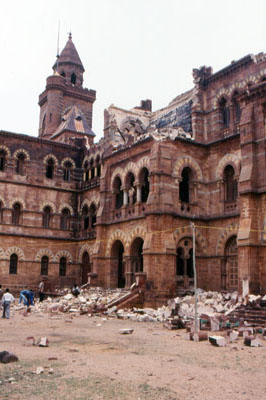
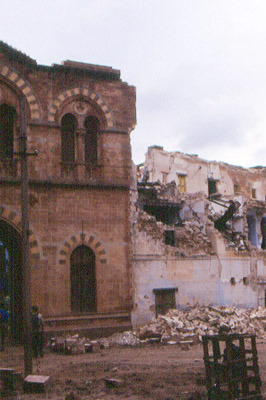
Failure due to collapse of walls or Reinforced concrete columns
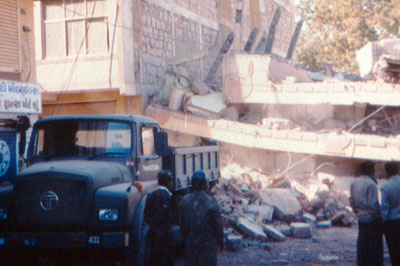
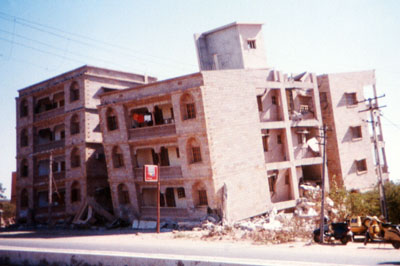
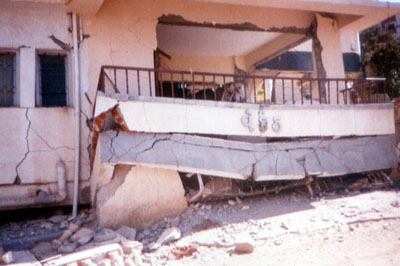
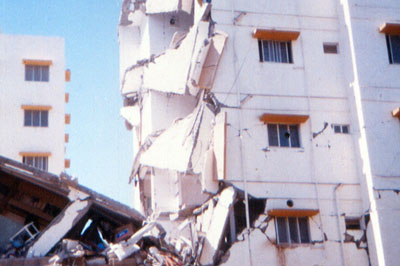
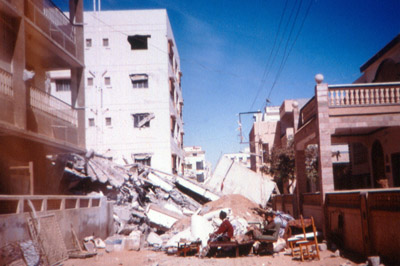
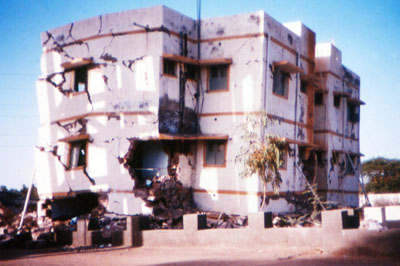
Pathologies cause by bad reinforcements
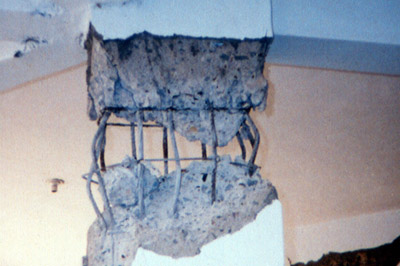
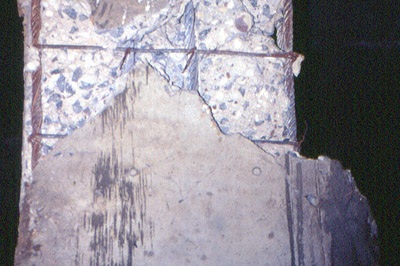
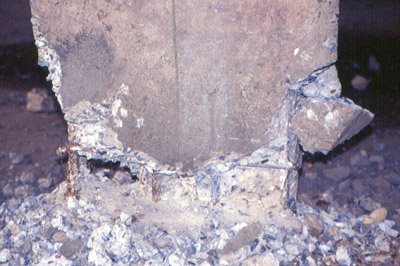
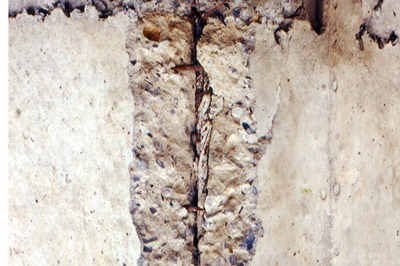
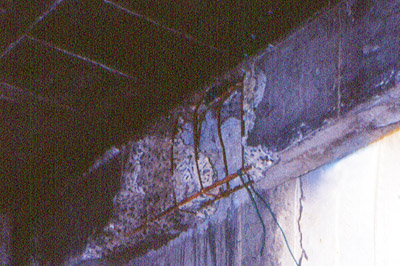
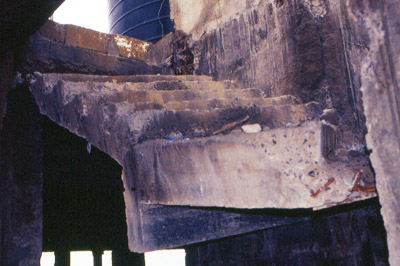
PRINCIPLES FOR EARTHQUAKE RESISTANCE
Though hi-tech technologies exist in Japan or USA, it is not economically possible to build earthquake proof buildings, especially for low-income groups and small projects.
But it is possible to build easily earthquake resistant buildings, without much extra cost, and which would not collapse suddenly without warning. Any new building which is located in the zones 3, 4, 5 must be designed to resist earthquakes. For projects, like houses, this can be satisfied by a well built construction, which follows all basics of masonry guidelines, like bond pattern, mortar quality, brick or stone laying, etc.
In the case of the earthquake of January 2001 in Gujarat, some traditional houses made of adobes or stones withstood very well the seism violence. They were simply well designed and well built.
An earthquake resistant building is able to accumulate a lot of energy without major failure. It will swing and sway and it might be damaged. But it would not collapse before giving very visible signs. Therefore, people would be able to leave the building before it would collapse. An earthquake resistant building, which has been damaged, could most of the time be repaired.
• Band or ring beam – A reinforced concrete or reinforced brick runner, which ties all the walls together. It imparts the horizontal bending of the walls.
• Box system – A structure made of a load bearing masonry wall without a space frame. The walls, acting as shear walls, are resisting the horizontal forces.
• Brittleness – The possibility of a structure to crack and collapse easily. It is arising either from the use of brittle materials or from a wrong design. The opposite of brittleness is ductility.
• Centre of gravity – The point through which the resultant of the masses of a system acts. It corresponds to the centre of gravity of the plan.
• Centre of rigidity – The point through which the resultant of the restoring forces of a system acts. It is the rotation point of the structure and it is related to the masses of the vertical parts of a building.
• Ductility – The ability of a building to bend, sway and deform by a large amount without collapse. The building may crack and get damaged in some parts, but it would not collapse. The opposite of ductility is brittleness. A building built with brittle materials can be made ductile with a proper design and with the incorporation of various reinforcements.
• Plasticity – The property of a material, and especially a soil, to be submitted to deformation without elastic failure. A humid soil is quite plastic and can absorb a lot of energy before breaking. A dry soil will be less plastic, but will still be able to absorb more energy than stones or fired bricks before failing.
• Shear wall – A wall, which resists lateral forces in its own plane. Shear walls are structurally linked with other cross walls and with floors and roofs, which acts as diaphragms. Wide piers and buttresses are considered as shear walls.
• Vertical tie – A RCC reinforced member, which ties the various ring beams, from plinth to roof.
| • Simple and appropriate design | • Proper bonds with appropriate and well laid mortar | • Good overlap of steel bars and good cover with concrete | • Good detailing in general |
The structure should be done in such a way that the walls are bracing each other to prevent bending moment. Walls should also be designed as shear walls to resist the lateral forces in their plane. This means that openings should be small, rather centred and not too close from corners. Reinforcing the masonry should not be a way to improve a wrong design. It would rather be a means to add more strength to the building.
Well built buildings which resisted the earthquake in Gujarat
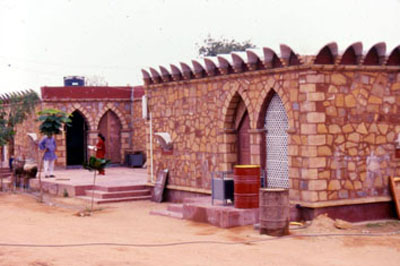
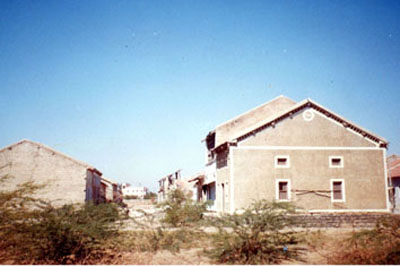
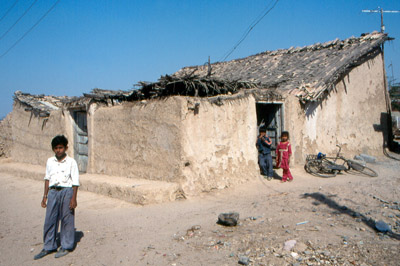
Contact US
- Address:Auroville Earth Institute, Auroshilpam, Auroville 605 101 - T.N. India
- Phone:+91 (0) 413 - 262 3330 / 262 3064
- Email:info@earth-auroville.comOpens in your application

